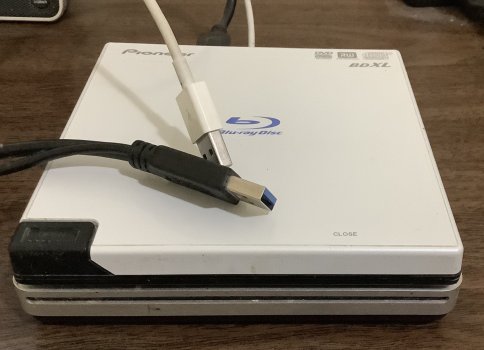I think the driving force for changing everything to USB-C will be the EU regulations. It also makes sense; how many times have you tried to plug in USB-A and it doesn't go in, so you flip it around and it still won't go in, then you flip it back to the first side and it finally goes in? EVERYONE has done this many, many times
...and yet,
still quicker than rummaging through the drawer to find an adapter or cable.
The real argument for USB-C when it comes to
charging isn't the connector but the related USB power delivery standard which standardises
fast charging and caters for higher-power devices like laptops.
WiFi *did* replace Ethernet in all the places where it made sense. How often do you come across laptops with a built in Ethernet port these days?
It's the "where it made sense" part that's relevant. Arguably it made sense on laptops - esp. MacBook Air-style systems which would have ended up needing some sort of "micro Ethernet" connector and a dongle anyhow. Whether it ever made sense to remove it from the MacBook Pro is an argument for another thread. WiFi and Ethernet co-existed happily on MacBooks for years - Ethernet on MacBooks
was replaced by Thunderbolt and USB (+ ethernet dongles).
...which would be annoying and pointless on desktop Macs (this thread is about the Mini) even though Thunderbolt
can replace Ethernet (either with an Ethernet dongle or using IP-over-Thunderbolt) having a dedicated Ethernet port
on a desktop machine is still very useful to a lot of people.
USB-C and USB-A address the same ones and anyways
It's more complicated than that.
USB-C/TB ports are in demand for driving displays, docking stations, running 20Gbps+ devices and (on laptops) charging/power delivery. Plug a mouse, keyboard, scanner, printer, most webcams, most audio devices, MIDI devices or most low/mid-range storage devices into a TB port and you're blocking one of your machine's limited number of display/high-bandwidth I/O ports. In an ideal world, the solution would be simple: put lots of USB-C/TB ports on the machine so that doesn't matter. In practice fully-functional TB ports are expensive - both in terms of cost and in how many of the CPU & GPU's I/O lanes they tie up - along with 15W per-port potential power draw so the tendency has been to reduce the total number of ports available for
anything - necessitating the use of more external hubs/docks to "break out" the functions of each TB port. This reduction in the number of USB ports of
any type on desktops is the real problem.
The USB-A ports on the old Mini and Studio Max didn't come "at the expense" of a TB port - those systems already had the full complement of TB4 ports supported by the SoC. They were
extra low/medium-bandwidth I/O ports that were useful to many people and didn't hurt. anybody else...
Now, to be fair, the (regular) M4 Mini doesn't have that problem: all it did was swap the USB-A ports for USB-3-only USB-C ports
and add an extra TB4 port. I don't think using a USB-C-to-A dongle is a big deal on a desktop machine - although (a) nor would using a USB-A-to-C dongle in a USB-A port and (b) moving those ports to the front so cables/dongles etc, stick out over the desktop
is a problem.
However, in the bigger picture, the M4
Pro Mini is down a TB port c.f. the M2 Pro Mini, and while it's nice that even the base M4 Mini now has 3 TB ports, it's clear that the M4 chip can support
4 TB4 (and the 10 core iMac
does) - so where's the missing TB port on the new Minis? Now, maybe there is some technical reason (maybe the HDMI port and/or Ethernet is now 'eating' a TB4) - but that's hard to buy since the iMac has 4xTB4
and a high-def internal display, webcam, microphones, Ethernet etc. So it looks like Apple is still playing "artificial scarcity" with USB ports.



